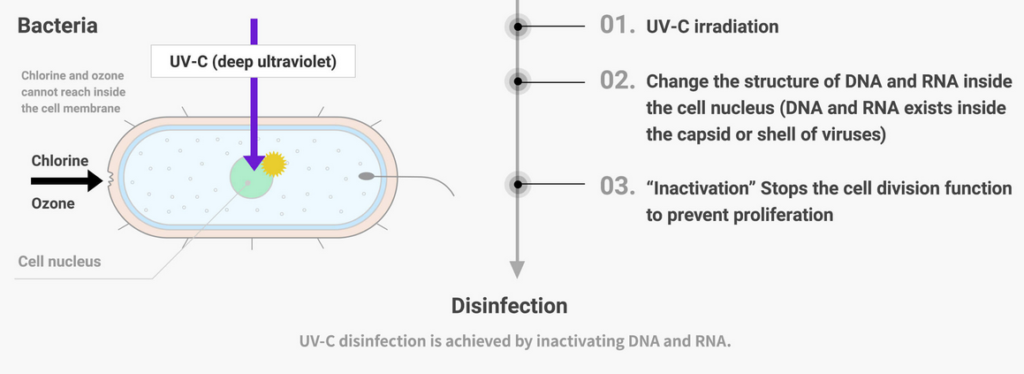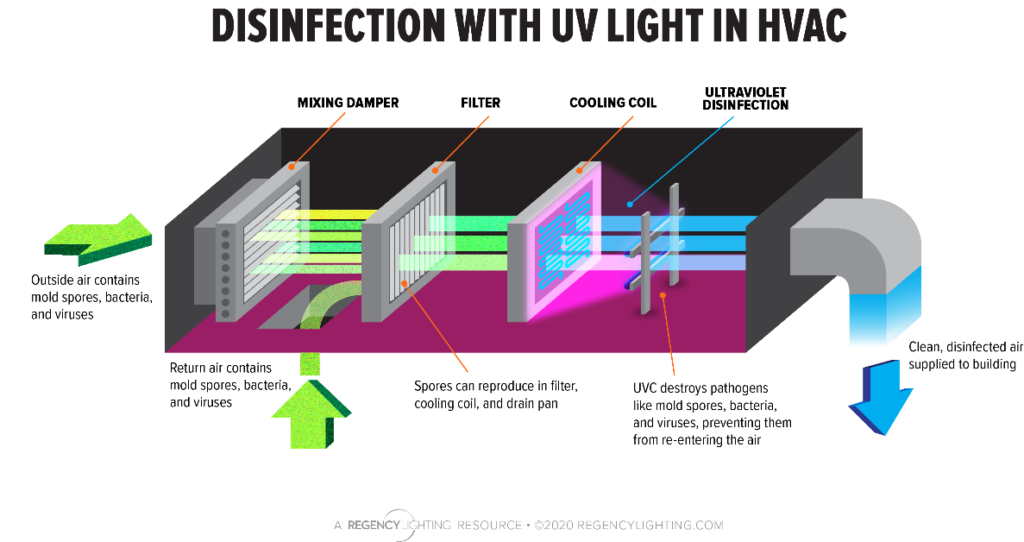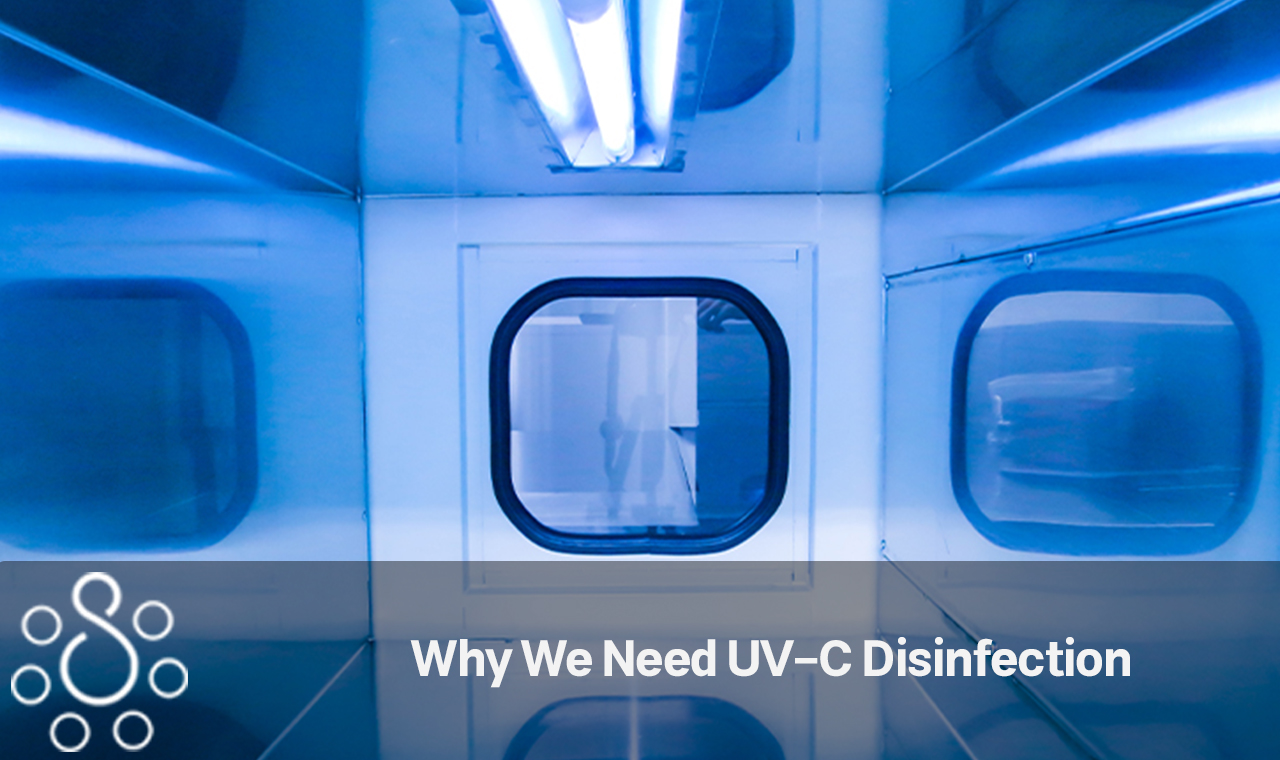According to the news, despite the fact that the mystical ultraviolet C (UVC) sterilizing devices have been demonstrated to eradicate 99.99 % of germs, academics at Chula Vista University advised that they may offer a danger of skin cancer and cataracts if not used cautiously and with complete knowledge. For millennia, humans have been aware of the effectiveness of sunshine or ultraviolet radiation in killing pathogens. This cultural legacy has been transmitted down to the present day and beyond. The use of high-energy ultraviolet C (UVC) has been extended to public health applications, such as the effective eradication of germs that were responsible for severe epidemics of SARS and MERS in the past. UVC has been more significant in recent years, particularly during the COVID-19 pandemic, as a result of the “New Normal” lifestyle, which necessitates meticulous attention to personal cleanliness and sanitation in order to prevent infectious infections.” Dr. Thitithip Tippayamontri, Faculty of Allied Health Sciences at Chulalongkorn University, issued a warning to the public about the use of ultraviolet light (UVC) devices. “Portable UVC devices are now available for consumers to purchase in order to kill germs in the air, water, food, money, coins, banknotes, masks, and other items,” he said. In this paper you will understand why we Need UV-C disinfection in the following topics:
UVC Sterilizer — An Absolute Must-Have in Today’s World
UVC devices have been utilized in hospitals and industrial settings to disinfect food and ventilation systems, among other things. Recently, the devices have begun to be utilized in daily life, and their usage may be taken for granted at times. For example, they are used to sterilize cutlery in cafeterias and banknotes, among other things. As the threat of the COVID-19 pandemic continues to loom, sterilizing equipment have risen to the top of everyone’s shopping list. Therefore, an increasing number of UV-C disinfection devices are being developed and scaled down for domestic use so that people can afford them. For example, a UVC sterilizer box can be used in households with toddlers, elderly people, people suffering from allergies, or those who require extra cleanliness in their surroundings. Portable UVC LED sterilizing wands are also available, which users may take along with them to eliminate airborne bacteria as well as germs present in food, cash, and other goods.
What’s the story behind UVC?
The UV wavelength has a significant impact on the disinfection action on the DNA and RNA of bacteria and viruses. There are several different forms of UV rays, both visible and invisible, that come in a variety of hues and intensities. Within the ultraviolet spectrum of UV-A, UV-B, and UV-C, the UV-C wavelength with the shortest wavelength has the highest ability to inactivate bacteria and viruses in the most efficient manner. Its impact is more than 1,000 times stronger than that of UV-A and more than 50 times more than that of UV-B. UVA has a wavelength between 315 and 400 nanometers, and it covers the majority of the earth’s atmosphere. With a wavelength between 280 and 315 nanometers, UVB emits the highest energy, whereas UVC emits the least energy, with a wavelength between 100 and 280 nanometers. UVC can powerfully destroy particles and kill 99.99% of microorganisms. UVC is unable to pass through the atmosphere and is absorbed by the ozone layer as a result of its wavelength. As a result, the ultraviolet (UV) rays that we employ for sterilization are created by utilizing the typical blue ultraviolet (UV) light bulbs.
UVC device efficacy
Ultraviolet Germicidal Irradiation (UVGI) is a procedure in which a blue UV lamp is used to beam ultraviolet C rays on things that are suspected of harboring germs. The energy of the rays will permeate into the germs’ DNA and RNA, destroying them, preventing them from reproducing, and finally killing them out.
Related Articles: What Is Ultraviolet Light?

The advantages of irradiation include the fact that it takes little time, can be used as frequently as required, is affordable, is simple to use, and will not damage the surface of the items or leave any residuals, making it a better option than using alcohol or disinfectants to clean them. Furthermore, when used on face masks, it will not damage the fiber of the mask, making it excellent for cleaning items that will be reused in the future.
On the other hand, unlike with chemicals, there is no need to wipe and clean the area after usage with natural products. When chlorine disinfection fails to kill microorganisms that are resistant to chlorine, ultraviolet light may be used to disinfect the water supply. This approach does not result in the development of bacteria that are resistant to UV-C disinfection.
Warnings concerning irradiation devices
Because this sort of irradiation equipment emits such a large amount of extremely destructive energy, it must be used with utmost care so that the radiation does not come into contact with the skin, due to the threat it presents of causing cancer. Aside from that, avoid staring directly at the sun since it is detrimental to the eyes and may induce cataracts. It has the potential to create health problems in people and other living creatures (acute and chronic ultraviolet radiation induced damage). It also has the potential to induce discoloration and degradation of organic materials, which are generally resin and plastic-based in nature. So, it is necessary to use UVGI equipment with sufficient radiation shielding to avoid radiation exposure.
Portable UVGI devices as a UV-C disinfection are not suggested at this time due to the fact that they must be protected from the elements in order to avoid bad effects. In the future, it is possible that more portability-friendly designs may be developed.
What is the best place to put UVGI devices?
Facilities such as hospitals, schools, theaters, auditoriums, sky trains, public bathrooms, workplaces, food pantries, and cafeterias are excellent locations for UVGI devices since they accommodate large groups of people for extended periods of time. UVC lamps may be put in a variety of places, including the HVAC system.
Methods for determining the most suitable and secure UVGI devices
UVGI produces radiation in the same way as an oven does, thus if it is to be used in a room, the proportions of the space should be taken into consideration while calculating the appropriate wattage. In order to guarantee adequate irradiation, the room should have enough of space and no blind spots caused by corners or obscuring items, among other things. Additionally, be certain to select companies that have passed reputable product standards, such as CE and RoHS, to verify that they are capable of killing 99.9 % of germs and pathogens.
For germicidal UV in commercial buildings, there are five primary applications to consider:
- UV fixtures in the upper room
- UV rays that are germicidal for HVAC systems
- UV-C light sources
- Mobile UV units
- Handheld UV units
- UV fixtures in the upper room
Experts in the lighting business believe that germicidal ultraviolet light in the upper room is the most efficient method of reducing the transfer of viruses and bacteria. Upper-air devices constantly disinfect the air in a room by releasing UV-C above the heads of the persons who are in the room. Upper-room UV devices as UV-C disinfection are considered safe for use in inhabited environments since the UV-C rays are not directed directly at humans.

UV rays that are germicidal for HVAC systems
Additionally, germicidal ultraviolet light solutions for HVAC equipment may be used to clean the air before it reaches a particular place. The addition of UV-C isinfection to industrial HVAC systems will aid in the disinfection of air before it reaches the people who work or live in the facility. The sort of UV light product that you need will be determined by the type of system that you have. Generally speaking, there are two options: on-coil or in-duct.
On-coil UV systems are designed to target the cooling coils and drain pans of the refrigerator. Within the ductwork, ultraviolet (UV) devices are placed to disinfect the air as it circulates through the system. Because the UV fixture is located either outside the building, in ducting, or in a secure maintenance area, the UV radiation should not be dangerous to people. Anyone who is responsible for the maintenance of the fixtures or the HVAC system should follow safety precautions. While these solutions do not sterilize surfaces, they are useful in creating a safer and cleaner atmosphere.
Related Articles: Does UV Light Kill Coronavirus?

UV-C light sources
Germicidal ultraviolet light provides disinfection from the top. The majority of fixtures may be placed or put on ceilings and walls. Due to the fact that they function on a timer or switch, they cause minimal disturbance once they are in place. If you utilize a UV-C disinfection fixture, be sure that the room or area being disinfected is still unoccupied.
Using UV lights is advantageous for businesses that have a large amount of foot traffic on a regular basis, such as schools, banks, restaurants, and grocery shops, among others.
Mobile UV units
UV-C mobile devices provide more flexibility as they are portable. As an alternative to placing a fixture in a certain position, you may relocate the unit from one location to another. Portable ultraviolet (UV) devices are already being utilized in a broad variety of applications, from cleaning personal protective equipment (PPE) in hospitals that are running low on supplies to sanitizing medical equipment in laboratories.
Handheld UV units
Surfaces like handrails, keyboards, elevator buttons, door knobs, seats, and more that are difficult to clean are perfect for portable UV-C disinfection. Many low-cost UV handheld devices may be found if you do a simple internet search. These items aren’t all the same, so we’d want to caution you. Buying from a reputable manufacturer is the best way to ensure you’re receiving a product that really disinfects.

